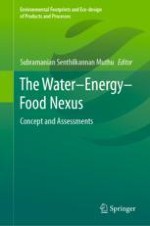Abstract
When reflecting on the global call for sustainable development (Gutteres in Davos speech 2019, January 24. World Economic Forum, Davos, 2019 [
29]), a question posed by Amartya Sen actuates further thought—namely that for who has to be sustained (Anand and Sen in World Dev 28:2029–2049, 2000a [
4])? This question was answered by himself, proposing “it is not so much that humanity is trying to sustain the natural world but rather that humanity is trying to sustain itself (Sen in J Hum Dev Capabil 14:6–20, 2013 [
66])”. Against this background, in our research we addressed this question of who has to be sustained using Sen’s capability approach for the case study of Germany. For this purpose, the German household survey (Einkommens- und Verbrauchsstichprobe (EVS)) of the German Federal Statistical Office is used to analyse five social household groups (all households, single households, single parents, couples without children, couples with children) according to their income (nine income classes) (Federal Statistical Office Germany in Wirtschaftsrechnungen. Einkommens- und Verbrauchsstichprobe Einnahmen und Ausgaben privater Haushalte 2018, 2020a [
19]; Federal Statistical Office Germany in Wirtschaftsrechnungen. Einkommens- und Verbrauchsstichprobe Konsumausgaben privater Haushalte 2018, 2020b [
20]). Based on this survey, the question of who needs to be sustained will be analysed as follows:
1.
First, the “worldwide reach (Rosa in Resonanz: Eine Soziologie der Weltbeziehung. Suhrkamp, Berlin, 2019 [
62])” of the consumption patterns of the German household groups will be measured by their ecological and water footprints.
2.
Second, an operationalization is derived for Amartya Sen’s sustainable development definition using the food–energy–water nexus as the core of sustainable development (United Nations (UN Water) in Water, food and energy. United Nations, 2020 [
73]), and to reveal both
a.
potential contradictions between the FEW sectors and other sectors of the German society which can negatively affect sustainable development in Germany, and
b.
the degree of inequality in functionings and capabilities among German households.
3.
Finally, those household groups will be identified which “have to be sustained” the most according to Sen’s definition.
In the presented model, based on ul Haq (Fukuda-Parr in Fem Econ 9:301–317, 2003 [
24]; Haq in Human development in a changing world. UNDP, New York, 1992 [
30]; Haq in Reflections on human development. Oxford University Press, Oxford, 1995 [
31]) and Sen (Anand and Sen in Human development index: methodology and measurement. Occasional papers. UNDP, New York, 1994 [
3]; Sen in Ökonomie für den Menschen [Economy for the people], 2nd edn. dtv, Munch, 2003 [
59]), the German capability index (GCI) is used to reveal both the capabilities and functionings of German society and the underlying justice structure of the German society. The capabilities (realization opportunities) in this context describe people’s opportunities of using their functionings (abilities) to achieve a place in society (Venkatapuram in Health justice. Polity Press, Cambridge, 2011 [
81]) given their personal capabilities, while simultaneously maintaining a sustainable use of the food–energy–water resources. The aim of the German capability index (GCI) is to make the capabilities of the various German households comparable and establish the GCI as an index of revealed capabilities.
